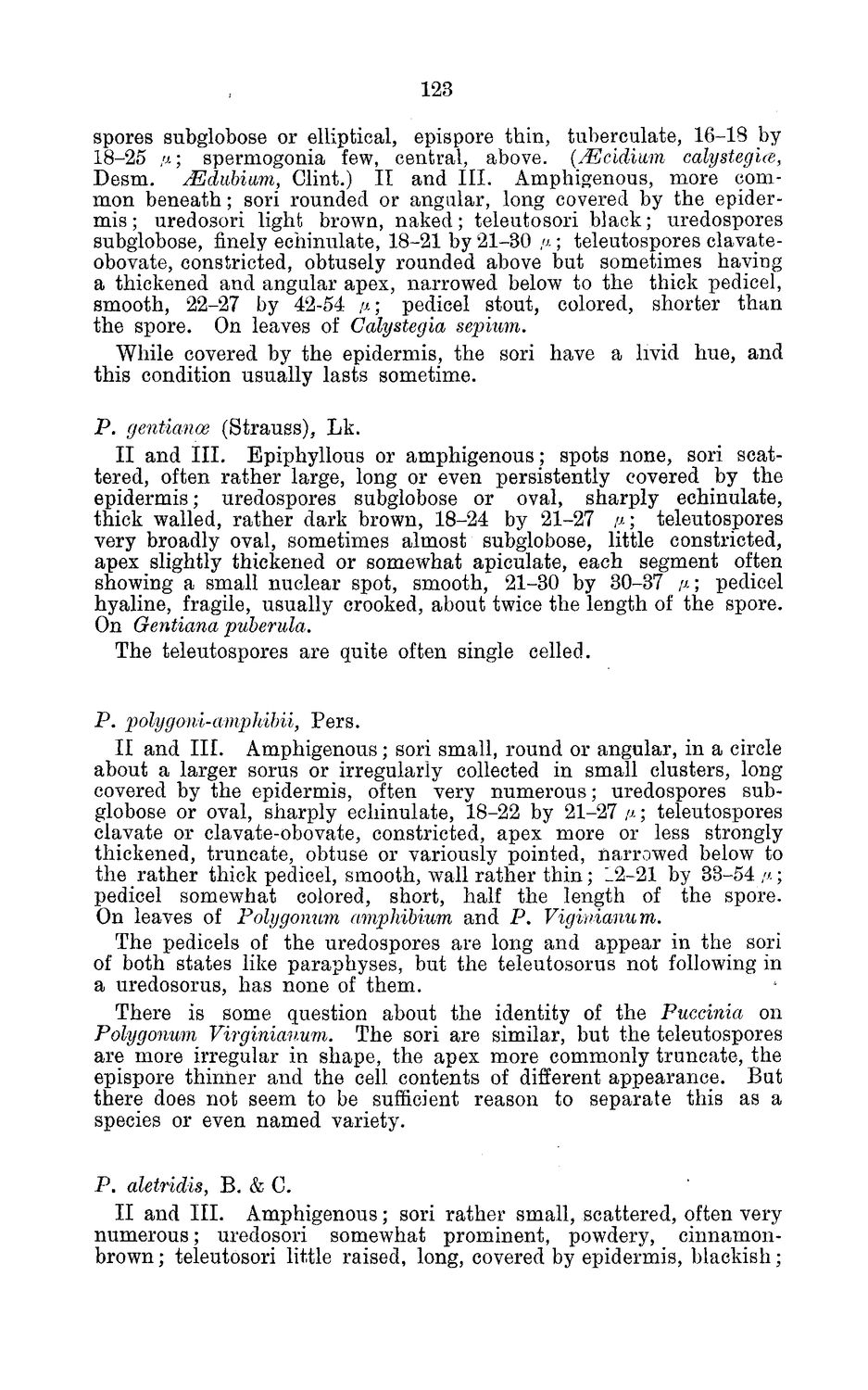| |
| |
Caption: Board of Trustees Minutes - 1884
This is a reduced-resolution page image for fast online browsing.

EXTRACTED TEXT FROM PAGE:
123 spores subglobose or elliptical, epispore thin, tuberculate, 16-13 by 18-25 /JL; spermogonia few, central, above. (JEcidium calysteg'ue, Desm. Mdubium, Clint.) II and III. Amphigenous, more common beneath; sori rounded or angular, long covered by the epidermis; uredosori light brown, naked; teleutosori black; uredospores subglobose, finely echinulate, 18-21 by 21-30 /i.; teleutospores clavateobovate, constricted, obtusely rounded above but sometimes haying a thickened and angular apex, narrowed below to the thick pedicel, smooth, 22-27 by 42-54 /i; pedicel stout, colored, shorter than the spore. On leaves of Calystegia sepium. While covered by the epidermis, the sori have a livid hue, and this condition usually lasts sometime. P. gentianoe (Strauss), Lk. II and III. Epiphyllous or amphigenous; spots none, sori scattered, often rather large, long or even persistently covered by the epidermis; uredospores subglobose or oval, sharply echinulate, thick walled, rather dark brown, 18-24 by 21-27 M; teleutospores very broadly oval, sometimes almost subglobose, little constricted, apex slightly thickened or somewhat apiculate, each segment often showing a small nuclear spot, smooth, 21-30 by 30-37 v; pedicel hyaline, fragile, usually crooked, about twice the length of the spore. On Gentiana puberula. The teleutospores are quite often single celled. P. polygoni-amphibii, Pers. II and III. Amphigenous; sori small, round or angular, in a circle about a larger sorus or irregularly collected in small clusters, long covered by the epidermis, often very numerous; uredospores subglobose or oval, sharply echinulate, 18-22 by 21-27 n; teleutospores clavate or clavate-obovate, constricted, apex more or less strongly thickened, truncate, obtuse or variously pointed, narrowed below to the rather thick pedicel, smooth, wall rather thin; 12-21 by 33-54 /J. ; pedicel somewhat colored, short, half the length of the spore. On leaves of Polygonum amphibium and P. Viginianum. The pedicels of the uredospores are long and appear in the sori of both states like paraphyses, but the teleutosorus not following in a uredosorus, has none of them. There is some question about the identity of the Puccinia on Polygonum Virginianum. The sori are similar, but the teleutospores are more irregular in shape, the apex more commonly truncate, the epispore thinner and the cell contents of different appearance. But there does not seem to be sufficient reason to separate this as a species or even named variety. P. aletridis, B. & C. II and III. Amphigenous; sori rather small, scattered, often very numerous; uredosori somewhat prominent, powdery, cinnamonbrown ; teleutosori little raised, long, covered by epidermis, blackish;
| |